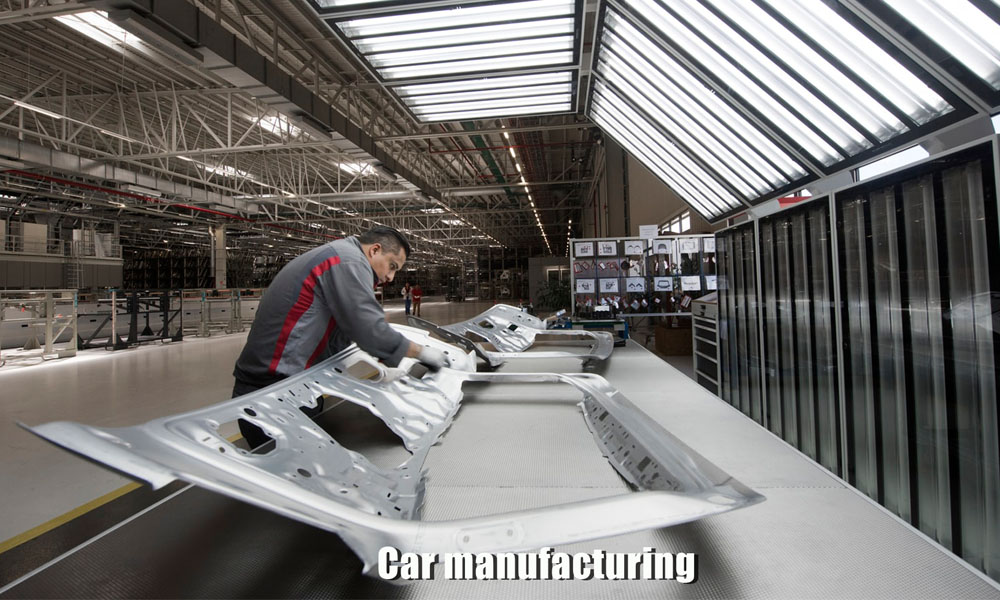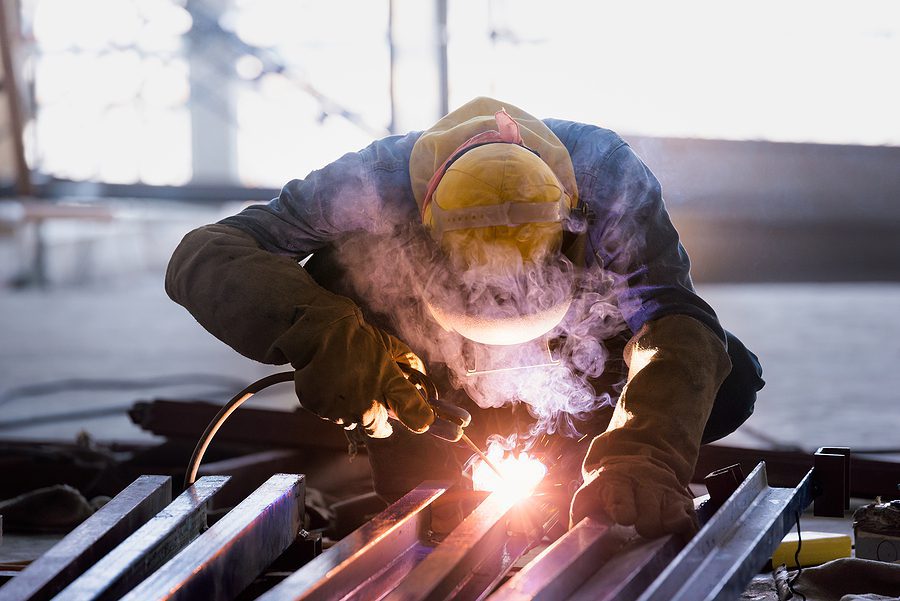Simple weld inspection practices shared by Montana Mobile Welding and Repair
All About Welding: Secret Insights Into Techniques and Ideal Practices for Success
Welding encompasses a variety of methods, each matched for details products and applications. Understanding these approaches, such as GMAW, SMAW, and TIG, is essential for accomplishing optimal results. Furthermore, the right devices and safety methods can not be ignored. As preparation and troubleshooting play vital duties in the welding process, grasping these elements can substantially improve the quality of the end product. What are the key variables that ensure an effective weld?
Comprehending Various Welding Techniques
Welding techniques include a selection of techniques, each suited to details applications and materials. Amongst the most typical strategies are Gas Metal Arc Welding (GMAW), Secured Steel Arc Welding (SMAW), and Tungsten Inert Gas Welding (TIG) GMAW, additionally called MIG welding, is popular for its speed and adaptability, making it suitable for thin materials. SMAW, or stick welding, is preferred for its simplicity and effectiveness in exterior settings, especially with thicker metals. TIG welding provides precision and control, making it appropriate for elaborate job and non-ferrous metals (Montana Mobile Welding and Repair Belgrade Welding). Each method has its one-of-a-kind advantages and factors to consider, allowing welders to choose the most effective approach based on the project's requirements, product kind, and preferred end results. Comprehending these methods is important for successful welding
Crucial Welding Tools and Devices
While various welding techniques call for specific abilities, the ideal devices and tools are similarly vital for attaining high quality outcomes. Important welding tools includes welding makers, which differ depending upon the strategy-- such as MIG, TIG, or stick welding. Protective gear, including aprons, handwear covers, and headgears, warranties safety and security and convenience during the procedure. In addition, clamps and fixtures assist protect products in position, making sure accuracy in welds. Consumables like welding poles, cable, and shielding gas are additionally crucial elements that influence the high quality of the weld. Moreover, tools such as mills and cutters assist in surface prep work and post-weld finishing, adding to a professional end result. Buying premium devices eventually enhances the performance and efficiency of welding projects.
Safety Practices in Welding
Proper safety and security practices are crucial in the welding sector to safeguard workers from possible threats. Welders must put on proper personal safety devices (PPE), including headgears with correct shading, handwear covers, and flame-resistant clothes. Sufficient air flow is important to lower direct exposure to harmful fumes and gases created during the welding process. In addition, employees should be learnt the right handling of welding devices to avoid accidents. Fire precaution, such as keeping flammable products far from the welding location and having fire extinguishers readily available, are required. Regular evaluations of devices and work spaces can assist recognize prospective dangers prior to they cause mishaps. By adhering to these safety methods, welders can develop a more secure working setting and decrease threats related to their profession.
Readying Products for Welding
Preparing materials for welding is an important action that greatly affects the top quality and integrity of the end product (Montana Mobile Welding and Repair). Appropriate prep work entails cleansing the surface areas to remove pollutants such as dust, rust, and oil, which can jeopardize the weld. Methods such as grinding, sanding, or making use of solvents are typically used to accomplish a tidy surface area. Furthermore, guaranteeing that the materials fit together snugly is necessary; gaps can result in weak welds. It's likewise vital to consider the placement and positioning of the parts, as this will certainly affect the simplicity of welding and the last result. Lastly, choosing the appropriate filler material and making certain compatibility with the base metals is crucial for accomplishing strong, resilient welds
Tips for Getting High-Quality Welds
Attaining high-grade welds requires interest to detail and adherence to ideal methods throughout the welding procedure. Appropriate joint preparation is necessary, making certain surface areas are clean and complimentary from pollutants. Selecting the proper filler material and welding strategy based upon the base metals is vital for optimal bonding. Maintaining constant traveling speed and angle while welding can avoid defects and promote harmony. Furthermore, controlling warmth input is necessary; excessive warmth can bring about bending and weakened joints. Frequently examining the welds throughout the procedure allows for prompt changes if required. Utilizing proper post-weld therapies, such as cleaning and stress alleviation, can improve the resilience and stability of the weld, eventually guaranteeing an effective result.
Troubleshooting Usual Welding Issues
Welding usually offers difficulties that can affect the high quality and integrity of the last product. Usual problems such as porosity, inconsistent weld grains, and getting too hot can occur, each calling for particular repairing methods. Understanding these problems is crucial for welders to boost their abilities and attain perfect outcomes.
Porosity Problems Explained
Although porosity can often be forgotten, it continues to be a crucial concern in welding that can compromise the integrity of a ac welding finished item. Porosity describes the existence of little gas pockets within the weld bead, which can lead and deteriorate the joint to premature failing. This trouble typically occurs from contaminants, wetness, or inappropriate protecting gas protection during the welding procedure. To mitigate porosity, welders need to validate that the base products are clean and dry, use ideal protecting gases, and preserve consistent welding specifications. Regularly evaluating the devices and environment can also assist determine possible issues prior to they materialize in the weld. Addressing porosity successfully is essential for achieving solid, durable welds that satisfy top quality standards.

Irregular Weld Beans
Inconsistent weld grains can greatly impact the top quality and toughness of a completed item. Numerous elements contribute to this issue, consisting of incorrect traveling speed, inaccurate amperage settings, and irregular electrode angles. When the welder moves too quickly, a grain may show up narrow and lack infiltration, while moving too gradually can trigger excessive accumulation. In addition, making use of the wrong amperage can result in click to read more either undercutting or excessive spatter, both of which concession weld honesty. The welder's method, such as irregular lantern motion, can additionally bring about unequal grain appearance. To mitigate these issues, welders must concentrate on keeping constant, regulated movements and making sure correct equipment setups to attain uniformity in their welds. Uniformity is essential to achieving strong and reputable welds.
Overheating and Warping Issues
Excessive warm throughout the welding process can bring about considerable overheating and contorting problems, influencing the structural honesty of the work surface. These issues often materialize as distortion, which can compromise alignment and fit-up, making more setting up testing. Variables contributing to overheating consist of the option of welding specifications, such as voltage and take a trip rate, in addition to the type of material being welded. To reduce these issues, welders must keep constant travel speed and appropriate warm input while monitoring the work surface temperature level. Furthermore, pre-heating or post-weld warmth treatment can help ease stress and anxieties brought on by quick air conditioning - Montana Mobile Welding and Repair. Routine evaluation browse around this web-site and adherence to ideal techniques are necessary in stopping getting too hot and making certain the durability and integrity of bonded structures
Frequently Asked Inquiries
What Are the Profession Opportunities in the Welding Market?
The welding market offers varied profession chances, consisting of positions as welders, engineers, examiners, and educators. Professionals can work in production, building, aerospace, and automotive fields, gaining from solid demand and affordable salaries in numerous roles.
Just How Can I Enhance My Welding Speed Without Sacrificing Quality?
To enhance welding rate without compromising top quality, one must practice reliable techniques, maintain devices, enhance settings, and improve hand-eye sychronisation. Normal training and looking for feedback can likewise substantially add to achieving much faster, premium welds.
What Certifications Are Readily Available for Welders?
Many qualifications exist for welders, including those from the American Welding Society (AWS), the National Center for Building Education And Learning and Research Study (NCCER), and numerous industry-specific organizations. These credentials improve employability and demonstrate skill efficiency.
Just How Does Welding Affect the Features of Metals?
Welding affects the properties of steels by changing their microstructure, which can result in changes in hardness, ductility, and toughness. Warmth input and cooling rates throughout the procedure substantially impact these material qualities.
Can I Bonded Dissimilar Metals With Each Other?
